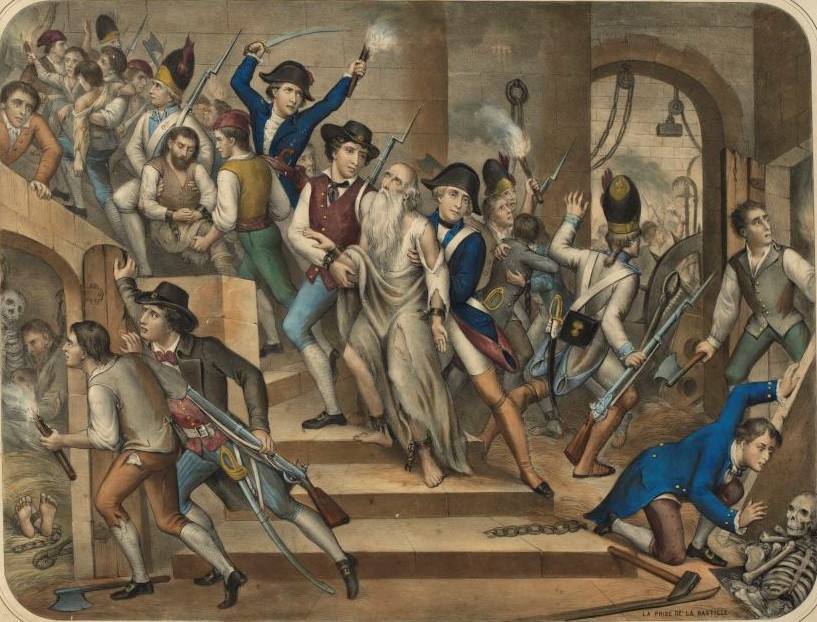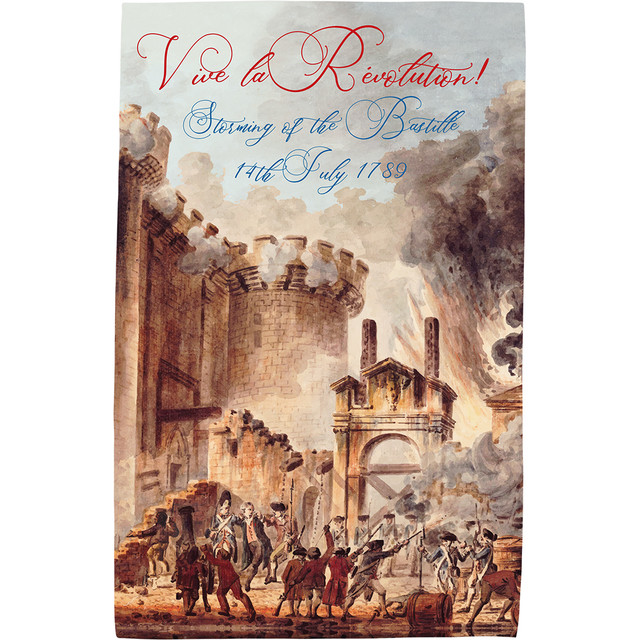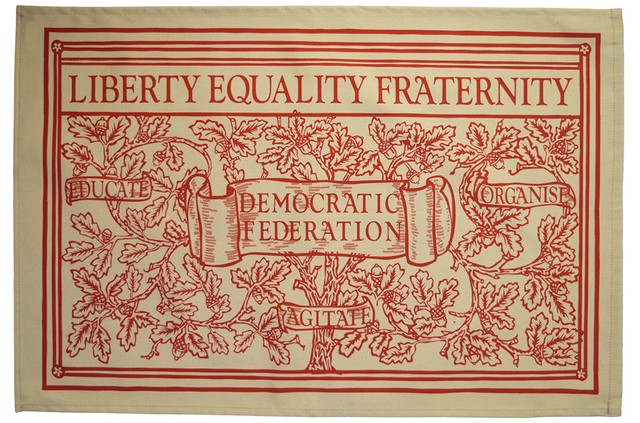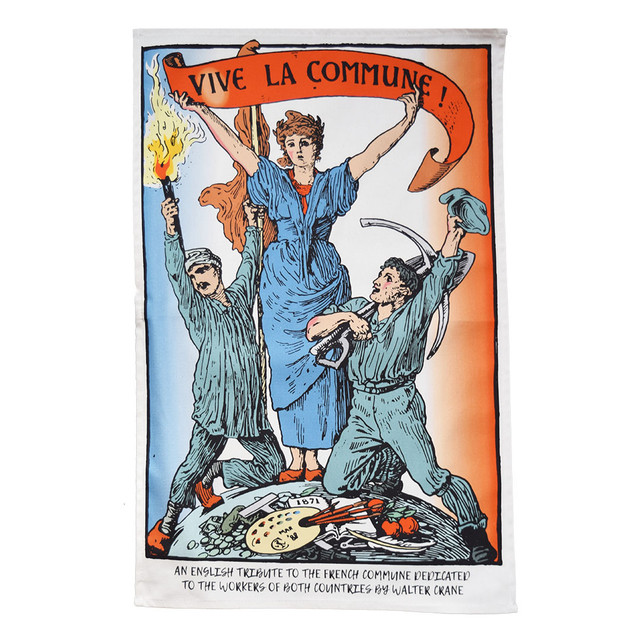Camille Desmoulins: The Stormer of the Bastille
Posted by Pete on 2nd Mar 2024
He jumped on a café table and called his fellow Parisians to arms in the name of the 'Third Estate' - the French people

Above: H. Jannin - Museum of the French Revolution
"I have dreamed of a Republic such as all the world would have adored."
The storming of the Bastille in July 1789 is among the most famous events in radical history.
In a way, it’s the classic example of a collective political action: the working people of Paris, together, taking the initiative to protect the French Revolution – their revolution – against reactionaries.
However, even collective struggles contain exceptional individuals.
In Paris that July, one man stood out: Camille Desmoulins, born today in 1760.
The Storming of the Bastille was a major event in European history, ensuring the survival of the French Revolution
See the Storming of the Bastille tea towel
Desmoulins wasn’t a Parisian by birth (he was from Picardy), but he shared the city’s revolutionary ethos.
He had moved to the capital as a student, to study law. But Desmoulins, while gifted academically, lacked the family connections to succeed as a lawyer in pre-revolutionary France.
Instead, he moved into journalism.
When Louis XVI called the long-neglected Estates General in 1789 to try to resolve a financial crisis, Desmoulins became an enthusiastic supporter of the ‘Third Estate’ – that is, the French people as distinct from the other two estates: the aristocracy and the clergy.
Desmoulins celebrated the ' Tennis Court oath' of June 1789 at the Palace of Versailles, when the representatives of the Third Estate declared themselves to be the new National Assembly of France, justified by the fact that they represented the vast majority of the actual population of the country.
But Desmoulins’ big moment came a month later, in Paris.
19th century socialists in Britain were later inspired by values proclaimed in the French Revolution, of Liberty, Equality and Fraternity
See the Liberty Equality Fraternity tea towel
The common people of Paris were inspired by the promise of the new revolution, but they were also wary.
The French royal family and its aristocratic allies had been accustomed to political dominance for centuries, and they were unlikely to give it up without a fight.
Parisians were on edge, watching for any sign of a counter revolution. And that sign came on 11 July 1789 with the resignation of Jacques Necker.
Necker had been King Louis’s finance minister, and was popular in France for his reputation as a reformer. This meant that his sudden resignation was read by most French radicals, including Desmoulins, as the first move in a campaign to overturn the revolution.
Hearing the news of Necker’s exit on Sunday 12 July, Desmoulins went to the Café de Foy in the gardens of the Palais Royal, a revolutionary hub in the centre of Paris.
Desmoulins jumped up on a table outside the café and called his compatriots to arms.
He warned his audience that, unless Parisians acted now, there would surely be a royalist massacre of the revolution’s supporters in the city.
Desmoulins’ message spread, and over the next couple of days he was key to mobilising and organising the people of Paris to defend the revolution.
On 14 July – now celebrated as ‘Bastille Day’ in significant part due to Desmoulins’ actions at this time – he led a group of citizens to seize weapons from the Hôtel des Invalides. From there, the revolutionaries moved on to the Bastille Prison.
Desmoulins was in the thick of it all, carrying a rifle and two pistols.
The Bastille, held by royal soldiers, was symbolic of the political tyranny of the old regime in France, and a strategic position in the capital. When it was taken by the revolutionaries, the king and his allies gave up on their attempt to regain their lost power.
After the storming of the Bastille, Desmoulins became a leader of the French Revolution in Paris.
He remained on the Left of the movement during the 1790s. He was key to the decision to overthrow the monarchy and replace it with a republic in 1792, and agitated for the expansion of women’s civil rights in France.
But like so many French revolutionaries, Desmoulins became a victim of Robespierre’s regime of political terror during 1793-4 – made even more bitter by the fact that the two men had been close friends while at school together in Paris.
Desmoulins was executed on 5 April 1794 during one of the purges, for supposedly conspiring against the French republic.
Paris remained a hotbed of radical ideas throughout the 19th century, with the commune of 1871 being memorialised in a lithograph by British artist Walter Crane
See the Paris Commune tea towel
But Desmoulins never abandoned his commitment to the French Revolution. For him, it was the 'Terror' that betrayed the movement to liberate the people of France.
It is difficult to understate Camille Desmoulins’s role in the early years of the revolutionary project.
Although he did not live for long afterwards, Desmoulins’ actions in July 1789 were some of the most important in modern European history.
Had the people of Paris not been mobilised to storm the Bastille and secure the city, Louis XVI and his reactionary friends might have succeeded in snuffing out the French Revolution before it had changed anything. Instead, it went on to change the entire world.



